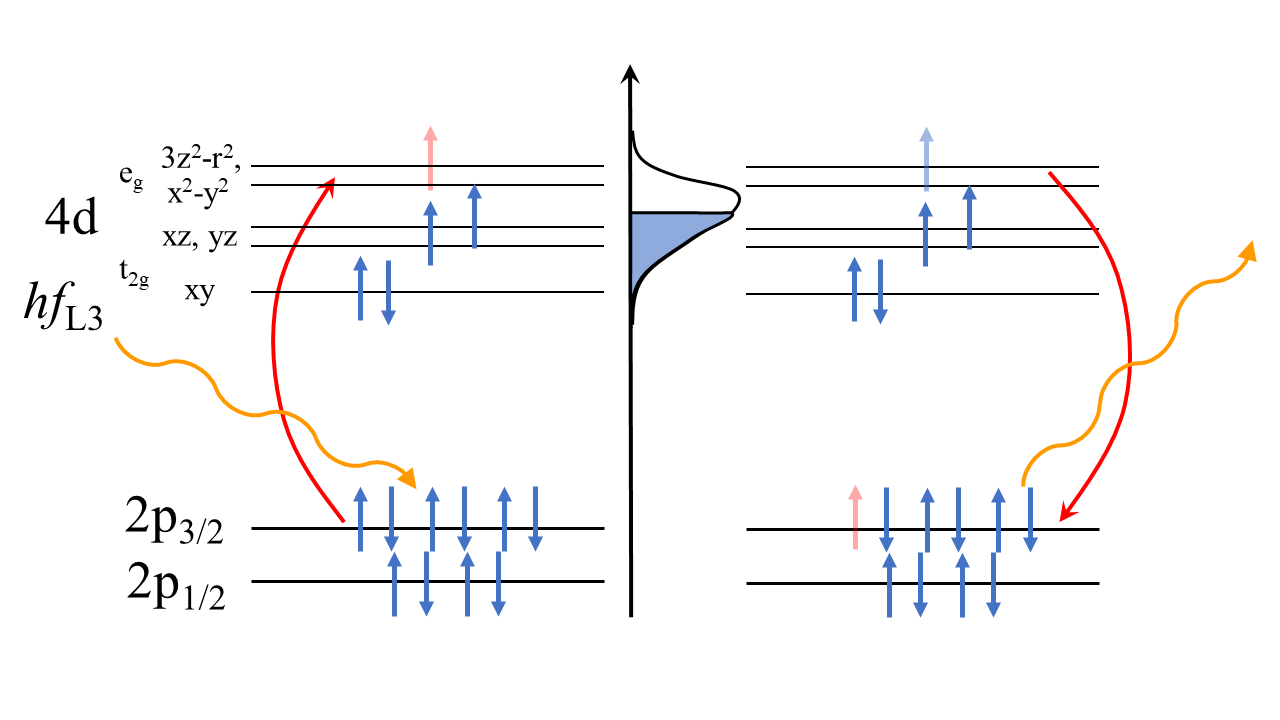Beamline Phone Number:
+44 (0) 1235 778711
Principal Beamline Scientist:
Alessandro Bombardi
Tel: +44 (0) 1235 778087
E-mail: [email protected]
Email: [email protected]
Tel: +44 (0) 1235 778056
Resonant elastic x-ray scattering (REXS) provides a unique probe to study complex ordering phenomena occurring in magnetic, quantum and functional materials.
The combination of the unique features of the synchrotron light, like the small beam size, the high resolution in reciprocal space, the possibility of controlling and analysing the beam polarization before and after the scattering process makes REXS unique in its ability to unravel and understand in one measurement spatial modulation of spin, charge, and orbital configuration.
The technique can be used also to explore various type of domains (e.g. chiral and magnetic domains, etc.) with resolution of few microns in single crystals and films.
The unique sensitivity of REXS is achieved by merging diffraction and x-ray absorption spectroscopy (XAS) into a single experiment. In this respect, specific projections of electronic states can be accessed during an experiment.

The intensity of the signal and the enhancement in resonant condition is dependent on the specific absorption edge investigated. Huge enhancement can be expected when the electrons responsible for the specific ordering investigated are accessed directly in the dipolar channel.
For a non-expert this means that, like in a dichroism experiment, the photoelectron ejected from the core and reabsorbed in the virtual transition has an orbital component state changed by 1 in most cases, so at the K edge (1s state), the electronic density of states investigated via the strongest transition have a p character, whereas the orbital character of the electronic states investigated via the strongest transition at the L2 and L3 edges, (the 2p1/2 and 2p3/2 states respectively), have a d character.
If you want to investigate magnetic ordering associated with the d electronic states in a 4d, or 5d transition metal you can expect a huge enhancement selecting an energy close to the L2 and L3 edges of the 4d and 5d transition metal of interest. The same applies at the actinides M4 and M5 edges.
For a magnetic signal, large enhancements can be usually expected at the L2 and L3 edges of the Rare Earths, even if in this case the strongest transition will not directly investigate the f states. The reason for that is related to the presence of a strong spin orbit coupling in the atomic state (2p) [Ref. 2].
Applying the same ideas, a small enhancement will be expected in the case of the K edges of the 3d transition metals for the magnetic ordering phenomena.
|
Series |
Abs. Edge |
Energy (keV) |
λ (Å) |
Shells |
Type |
Amp. (r0) |
|
Non-Resonant |
- |
- |
- |
- |
E1 |
~0.01 |
|
3d |
L2,3 |
0.4 – 1.0 |
12 – 30 |
2p → 3d |
E1 |
~100 |
|
|
K |
4.5 – 9.5 |
1.3 – 2.7 |
1s → 4p |
E1 |
~0.02 |
|
|
|
|
|
1s → 3d |
E2 |
~0.01 |
|
4d |
L2,3 |
2 – 3.5 |
3.5 – 6 |
2p → 5d |
E1 |
~100 |
|
5d |
L2,3 |
5.4 – 14 |
0.9 – 2.2 |
2p → 5d |
E1 |
~1-10 |
|
4f |
L2,3 |
5.7 – 10.3 |
1.2 – 2.2 |
2p → 5d |
E1 |
~0.10 |
|
|
|
|
|
2p → 4f |
E2 |
~0.05 |
|
|
M4,5 |
0.9 – 1.6 |
7.7 – 13.8 |
2d → 4f |
E1 |
~100 – 200 |
|
5f |
L2,3 |
17 – 21 |
0.6 – 0.7 |
2p → 6d |
E1 |
~0.05 |
|
|
|
|
|
2p → 4f |
E2 |
~0.01 |
|
|
M4,5 |
3.5 – 4.5 |
2.7 – 6 |
3d → 5f |
E1 |
~10 |
On I16 it is possible to easily perform REXS study in a variety of experimental environment including low temperature, high temperature, strain, electric and magnetic fields.
There are a series of other phenomena that can be investigated in resonant condition, like the anisotropy in the electronic charge around a given ion, or the anisotropy in thermal motion and several other processes. If you interested to perform this type of investigations, please get in touch with us for advice.
Below we list some seminal papers and review articles on REXS as well as some selected I16 publications to illustrate specific application of the techniques to multiferroics, Kitaev systems and other materials.
Templeton, D. H. & Templeton, L. K., Acta Cryst. A38, (1982) 62
Finkelstein, K.D., Shen, Q., Shastri, S., Phys. Rev. Lett. 69 (1992) 1612-1615.
Hill, J. P. & McMorrow, D. F., Acta Cryst. A52, (1996) 236-244
Luigi Paolasini, 2014 "Resonant and magnetic X-ray diffraction by polarized synchrotron radiation"
If you have any comments, suggestions or corrections, please contact a member of the beamline staff.
Diamond Light Source is the UK's national synchrotron science facility, located at the Harwell Science and Innovation Campus in Oxfordshire.
Copyright © 2022 Diamond Light Source
Diamond Light Source Ltd
Diamond House
Harwell Science & Innovation Campus
Didcot
Oxfordshire
OX11 0DE
Diamond Light Source® and the Diamond logo are registered trademarks of Diamond Light Source Ltd
Registered in England and Wales at Diamond House, Harwell Science and Innovation Campus, Didcot, Oxfordshire, OX11 0DE, United Kingdom. Company number: 4375679. VAT number: 287 461 957. Economic Operators Registration and Identification (EORI) number: GB287461957003.